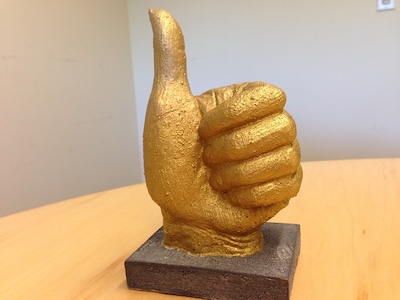Executive Director Coaching for Better Nonprofit Planning
- Home
- Small Nonprofit Practices
- Executive Director Coaching for Better Nonprofit Planning
Executive Director Coaching for Better Nonprofit Planning will allow you to take some time to reflect on what your organization's attitude is toward "planning."
I think you'll find it a valuable exercise to examine the next 8 practices, and see if adjustments might help your organization, and its mission, moving forward.
If you wish to discuss Executive Director coaching for better nonprofit planning within your organization, please contact me.
17. People Support the Stated Plan for the Organization Moving Forward

This is Practice 17 of 80
Where are you going? Are you moving forward? To those who have it, the value of a master plan, or strategic plan, is evident.
It is a living, fluid document that provides direction and a means to carry out the vision. Maximize its value by actively seeking the input and involvement of all stakeholders.
Don’t keep the master plan privy to a few people. Broadcast it and include anyone who is interested in being a part of what is developing.
- Is there any sense of secrecy to your master plan? For what reason?
- Who and how have people have been involved in its development?
- How can more people be included in its ongoing relevancy?
- How available and visible is it to all stakeholders?
Why This Practice is Important to Me as an Executive Coach
People are drawn to an organization that know where they want to go or feel called and compelled to go. They are more apt to volunteer their time to something that is moving forward.
Over the years, I've noticed how many small nonprofits have done little to no planning for their future.
- Sometimes I'm working with a new Executive Director. Obviously, unless they have a prior history with the organization, they are going to have a big job coming up with a master plan. It's going to take considerable time pulling together all the stakeholders in its creation.
- Other times I've been coaching an established, knowledgeable Executive Director. You might say they are "hyper aware" of the "players," nuances, multiple opinions, subtle personal agendas etc, that are in play as they try to create a master plan.
If there is no organized formal plan for the organization, and I am coaching the point-person, a considerable amount of our coaching time will be around the very practical task of creating a plan and getting people on board.
If there is a plan, more coaching time can be spent assessing, establishing areas for improvement, and executing on the master plan, given the existing people and resources.
- No plan - We're doing more tactical coaching. I'm a thought partner.
- Existing plan - We're further down the road where it is more about execution
The Key Concept, Attitude or Action That Drives This Practice
INCLUSION
The best plans are not always dictated from the top, but inclusive and developed organization-wide.
An Expansive Thought
People take ownership and develop long-term commitments when they are asked to participate in the long-term direction of the organization. They don't have to do it all, but they have fully bought in because they gave input.
An Action Point
Increasingly let your planning reflect all of the stakeholders involved in your organization? Having everyone "on board" can create positive forward movement and momentum.
Tip: Begin planning in smaller circles and work outward. The first few people to do the first pass on a masterplan should not hold their ideas too tightly. Leave room for others to introduce even further ideas to consider as the plan morphs into the best way forward.
18. During Decision Making, Options are
Weighed Against the Master Plan

This is Practice 18 of 80
The board has something to refer to during major decision making.
Having taken the time to develop a comprehensive plan, decisions come easier. Maintenance, upgrades and capital projects can be scheduled according to plan. Putting in place Executive Director coaching for better nonprofit planning will bear good fruit in this area.
Programs can be introduced and are more likely to succeed with a plan. Long-term staffing initiatives are more evident with a plan.
- What directions may have been taken that are not consistent with the master plan? What needs to be done about this? What will you do?
- How often do you refer to the master plan in your discussions?
- What discussions are presently on the table that could be improved or assisted by tying them into the master plan?
Why This Practice is Important to Me as an Executive Coach
Decisions come easier when there is some solid criteria to measure them against. When coaching the Executive Director or perhaps the Board Chair, I am able to ask questions that really zero in on the execution of the written plan.
I'm able to take coaching time to discuss options for implementation, possible barriers that might come up, resource allocation, staffing needed and who is best to carry out certain actions. This whole line of inquiry leads to greater clarity, better decision making, and more successful actions.
For me, this is always a great time working with leadership. It provides the leader with a real sense of making progress.
The Key Concept, Attitude or Action That Drives This Practice
DECISION MAKING
Making good decisions is absolutely critical to success.
An Expansive Thought
Every area can be checked against a master plan so the efforts of staff and the resources available can be harnessed in the most effective manner.
An Action Point
A carefully made master plan makes the best use of human and physical resources. Begin one.
19. Decisions
Are Based on Well Researched Information

This is Practice 19 of 80
If information is important for making decisions, get the correct data.
One person might “think” a course of action is right, but it is more powerful to “know”. Take the time to get the information that stands scrutiny.
You may have to contract out the research or projection-making function, but it will serve you well.
- How often do you or others make assumptions about what you believe is true without checking the facts? In what areas does this happen?
- What sort of problems has this caused in the past?
- What can you do to avoid it happening again?
- Who gathers the facts upon which you base your decision making? Do you know how they get their information? What's important here?
Why This Practice is Important to Me as an Executive Coach
Faulty information leads to poor decision making which leads to ineffective ministry.
I really don't want to be part of the process that is built on poor to downright faulty research. Basically, if the time is spent working with something that isn't accurate, the decisions that follow will be questionable in quality.
I like working with leaders who do their homework. Then we can make progress on the things that really matter.
The Key Concept, Attitude or Action That Drives This Practice
RESEARCH
Assumptions at best are only correct part of the time. Facts are always correct. Get the facts and then draw your assumptions from them.
An Expansive Thought
We can always do better with some minor adjustments based on the facts.
An Action Point
If you feel you are being ineffective, ask yourself what assumptions you have been acting on, what the truth really is, and then act on that truth.
20. The Master
Plan is Carefully Modified as Needed

This is Practice 20 of 80
A master plan is never “cast in stone” so that it restricts the organization.
Circumstances change and flexibility is important. People may have worked hard and passionately on their part of the strategy, but they must realize that going in new directions can sometimes get even better results.
Being tied to something that will no longer work effectively or be in the best interest of the organization only minimizes the chances of success.
- What need is there to be more open to change and flexibility?
- What is in the way of that happening?
- How would you recognize if something better came along?
- In what ways, if any, is you master plan holding you back? How might it be lacking in vision? On the other hand, how can you celebrate a well done master plan?
- How does your plan keep you in maintenance mode, or draw you forward to new possibilities?
Why This Practice is Important to Me as an Executive Coach
An inflexible document may restrict the organization from responding to new information or realities.
When I am coaching, Executive Directors will generally let me know if the board or other stakeholders are inflexible when it comes to the Master Plan. This may precipitate coaching on how to adjust the thinking of those involved in the planning process.
The flip side of this is a master document that doesn't mean much. The leadership have it, but don't actually pay much attention to it. That's a problem.
Why go to all the work of creating a master plan if you aren't going to refer to it, and worse still, you're just going to go off and do your own thing anyway? In this case our coaching will probably center around those few players who have an agenda, or seek to control what's happening.
The Key Concept, Attitude or Action That Drives This Practice
FLEXIBILITY
Flexibility means responding to the new while building on the solid foundation of what has come before.
An Expansive Thought
A master plan should continue to be improved so it can serve the purposes for which the organization exists. Serving a document is backwards.
An Action Point
Identify the two most restrictive elements of your master plan. Are there steps you need to take to modify it?
This is the end of Executive Director Coaching for Better Nonprofit Planning. To continue with the next four practices related to planning, click here.
How Will You Use Executive Director Coaching for Better Nonprofit Planning?
How will you and your leadership team use Executive Director Coaching for Better Nonprofit Planning?
You have an opportunity to examine the whole organization's attitude and practices related to planning. Take advantage of taking a critical look and notice where any adjustments might be made to improve the organization.
If you wish Executive Coaching for yourself or members of your senior leadership contact me here. We can have a conversation to discuss what coaching might look like.
Contact me here Privacy Policy
© G.E.Wood and Associates. All Rights Reserved in all media.
G.E. Wood and Associates is an international coaching firm registered in Ontario, Canada
142 Pratt Crescent, Gravenhurst, Ontario, Canada, P1P 1P5